My EGFG Gluten Free Flour Blend is the combination of four flours that took my gluten free baking to the next level. I don't call it an all-purpose flour blend because it doesn't work for ALL purposes. No GF flour blend can do that. Knowing that simple fact might just end your frustration with gluten free baking.
EGFG stands for Everyday Gluten Free Gourmet, so that's why this is my EGFG flour blend. I use this blend for about 80% of the things I make and it was a game changer way back when I was measuring different flours for every single recipe. I still do that for yeast breads, homemade pasta, pizza and more. But I make 100 recipes with this blend.
Jump to:
What to Make with an All Purpose Gluten Free Flour Blend
Here's a short list of the variety of recipes I make with my EGFG blend.
- Pancakes, waffles, crepes, muffins and even some cookies.
- Biscuits, cinnamon rolls, Yorkshire pudding and Chinese Onion Bread.
- Flaky pastry for whole pies, hand pies, turkey pot pie, meat pies, quiche and more.
- Tart pastry for my bourbon caramel pumpkin tart or a fruit tart.
- Special occasion desserts like Banana Bundt Cake, Crepe Cake, Strawberry Shortcake and Sticky Date Pudding.
- ...and many more recipes.
Ingredients
The joy of gluten free baking! Here are some fun facts that you just don't know until you start cooking gluten free.
- Sorghum flour - Sorghum is an ancient grain that's high in protein, iron, and other vitamins and minerals. There are several brands available wherever gluten free flours are sold. Bob's Red Mill brand is labeled sweet white sorghum flour, it's the same.
- Millet flour - Millet is an ancient grain that is a good source of protein, fibre, vitamins and minerals. Millet flour can be found at health food stores and Asian grocery stores.
- Sweet rice flour - Not the same as white rice flour, this flour is made from a sticky variety of rice. It is sold in Asian grocery stores labelled 'glutinous rice flour' and may not even have the name sweet rice flour on the package. There is no gluten in glutinous rice.
- Potato starch - This is not the same as potato flour and they are not interchangeable. This is the only gluten free flour I put through a strainer.
See recipe card for exact amounts.
📹 Instructions
It took me too many years to organize a simple system to make this flour blend in less than five minutes. Do not under estimate the value of creating a system that makes mixing a flour blend easy.
During one of my classes Colleen saw the large print signs on my container and asked if I could share the file. Here it is! I taped the recipe to both sides of my container as well as the canister I keep the flour in. The large print makes it easy to read the recipe from a distance.
Substitutions
Gluten free bakers need options so here are the suggestions I give to people who want to make a similar blend but have to substitute for whatever reason.
- Sorghum flour - oat flour is a good substitute for sorghum flour.
- Millet flour - this blend can be made by substituting sorghum flour with additional millet flour. Combine the two amounts into one and make a 3-ingredient blend.
- Sweet rice flour - The high amount of starch in sweet rice flour makes it act like a starch. If you can't find sweet rice flour then white rice flour is a good substitute.
- Potato starch - Gluten free baking is improved when two starches are combined rather than a larger amount of one starch. If you can't use potato try tapioca starch, arrowroot starch or cornstarch (in that order).
Variations: Adding a small amount of another flour
I borrowed the term experi-baking from my friend Sue Jennett, host of A Canadian Celiac Podcast. She is an excellent baker and ran her own gluten free bakery for many years. When I experi-bake I use a tried-and-true recipe, and replace a small amount of my flour blend with another gluten free flour. Anywhere from two tablespoons to half a cup.
I explain exactly how I do this in my recipe for Banana Muffins. In my recipe for granola bars I explain how I swap out the flour making two batches at a time. This is the best way to learn how different flours change your baking and what you like.
Variations: Gluten Free Flour Blends
If there was one perfect flour blend we'd all be using it. There isn't. Yet people have success with many different blends and you can too.
When I started cooking gluten free there were not as many store bought flour blends available as there are now. I tried many combinations over the first few years and finally found success with the flour blend from America's Test Kitchen (ATK) first gluten free cookbook, The How Can It Be Gluten Free Cookbook.
Although my recipes worked I found the large amount of rice flour had a slight aftertaste and unpleasant mouthfeel. After a lot of research and baking I eventually settled on my everyday EGFG blend. In the process I created a table comparing 11 different blends from bloggers around the web.

🛒 Equipment
It takes effort to create new systems in a kitchen that was working before you started gluten free. The time you'll save and the stress you'll avoid is worth it! Make it a top priority and be willing to adjust things for awhile until it really is a system that works.
- Clean canisters – I like easy-to-open containers with a wide top for spooning out flour but a 32-oz wide mouth Mason jar with a plastic lid works too. Consider stackable containers in various sizes, often sold as a set of 4.
- A digital kitchen scale is essential for accurate measuring and consistent results. Buy one with a flat surface that can hold any container and has an easy to read display.
- Inexpensive small plastic bowls are light weight and can be interchangeable when you're measuring flour. Mine easily hold 300 grams of flour, the amount I need when making this flour blend.
- Potato starch is the only flour/starch I sift. No matter what I'm making this small step makes it easier to evenly combine the finished ingredients. I have a mesh strainer that fits easily over my large flour container.
- Wire whisks with plastic handles come in many sizes, are comfortable to hold and essential for evenly mixing the different flours, starches and binders we use.
- My large flour container isn't a proper canister but it holds this recipe that makes 1 kg of flour (about 8 cups). I weigh each flour directly into the container and it works for me.
- Before making a new batch of my flour blend I transfer the last of it from the container into a wide mouth Mason jar with a plastic lids. This jar is easy to grab when I need small amounts of flour for any reason.
These are the America's Test Kitchen cookbooks, each packed with a lifetime of learning.
- The How Can It Be Gluten Free Cookbook (out of print)
- Volume 2 The How Can It Be Gluten Free Cookbook (out of print)
- How Can It Be Gluten Free Collection; 350 Groundbreaking Recipes For All Your Favourites with 75 Dairy Free Recipes (a compilation of the previous 2 cookbooks)
Storage
Storing gluten free flours is an adventure since most of us were used to having one canister with wheat flour. Now there are new ingredients that need to fit into your kitchen somewhere.
Store flour in airtight containers when possible. I have several canisters I fill but then store the remainder, in the original package, in the cupboard at room temperature. If you live in a hot or humid climate it may be important to store flour in the fridge or freezer. I thought that was a serious undertaking and I was not willing to do it.
I also keep my flour blend in the same cupboard and use it up in 4-6 weeks.
I have never had any flour go rancid but almond flour and brown rice flour are two that some people have reported going bad. I store my excess flours in the freezer and have a great system for that.
Top Tip
There is no single gluten free flour that works in every recipe. The light, airy texture of an Angel Food Cake or the hefty weight and wheaty taste of bagels is achieved with a combination of different flours. That's the joy of gluten free baking and you, yes you, can learn to make anything you want.
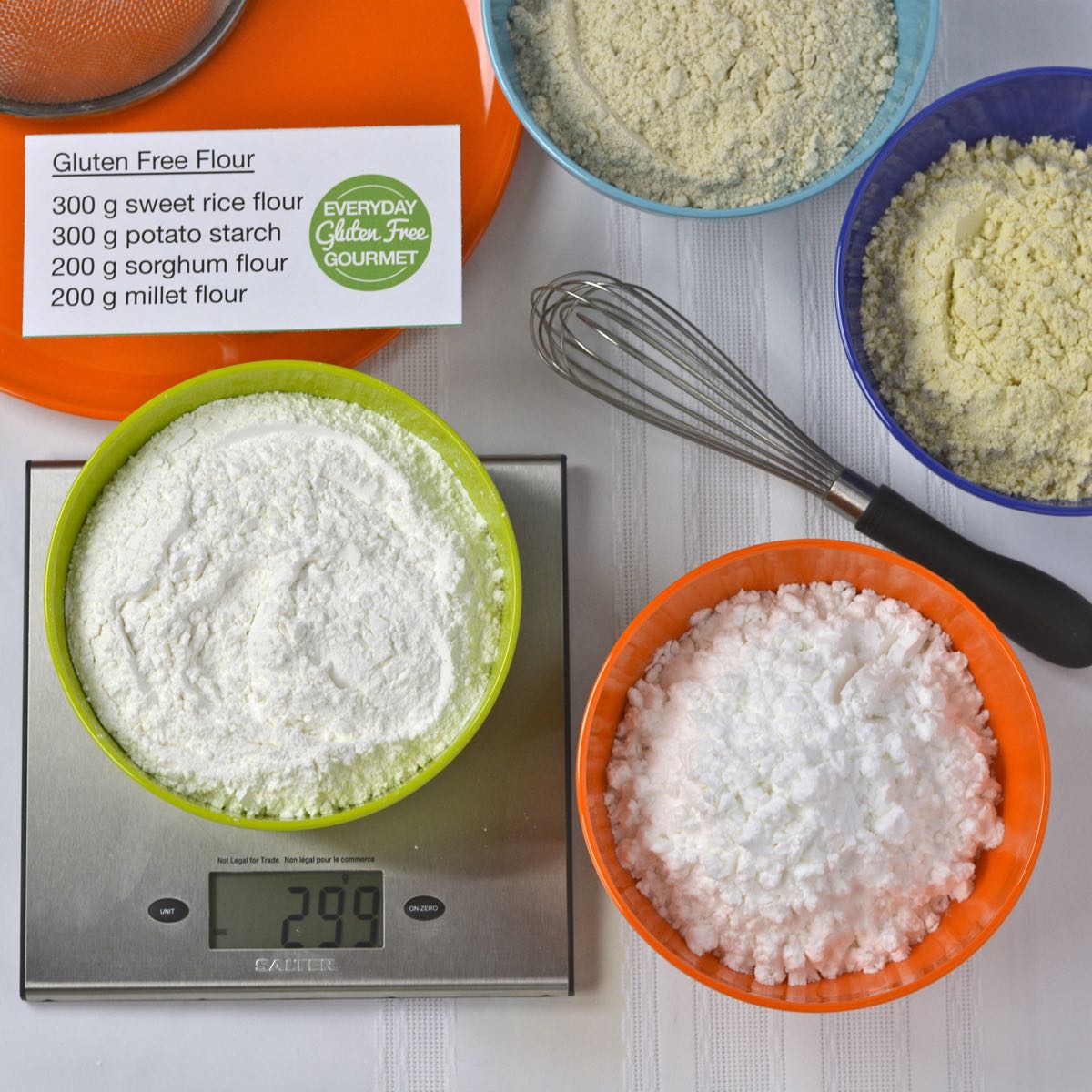
EGFG Gluten Free Flour Blend
Ingredients
- 200 grams sorghum flour
- 200 grams millet flour
- 300 grams sweet rice flour sold as glutinous rice flour
- 300 grams potato starch not potato flour
Instructions
- Place a bowl on the electronic scale and zero (tare).
- Spoon sorghum flour into the bowl until the scale reads 200g. Dump it into the large container where you will store your flour blend.
- Spoon millet flour into the bowl to measure 200g then add to the container.
- Spoon sweet rice flour into the bowl to measure 300g then add to the container.
- Place a strainer over the large container.
- Spoon potato starch into the bowl to measure 300g. Spoon half of it into the strainer then using the back of the spoon to push sift it into the container. Repeat with remainder of the potato starch.
- Using a wire whisk mix until the flours are combined and the mixture is all the same colour.
Notes
Sorghum flour: 1 ½ cups + 2 tablespoons (196 g)
Millet flour: 1 ⅓ cups + 1 tablespoon (202 g)
Sweet rice flour: 2 ½ cups (305 g)
Potato Starch: 1 ¾ cups + 1 tablespoon (298 g)
These measurements are close enough but be sure to use proper measuring cups and spoons and level them off with a straight edge every time.
Nutrition
Join me for my most popular cooking class, Understanding How To Use Gluten Free Flour. I learn more about flour all the time and share as I go. Subscribe to my list then send me an email and tell me what you're excited to learn to make.
__________________________________________________________________________
New here? Overwhelmed or frustrated? Get started with these 29 Tips about GF flour and get cooking. I can help you learn to cook gluten free food everyone wants to eat, and have fun doing it.
🎉 Exciting news! Adventures in a Gluten Free Kitchen, a membership for gluten free cooks, is coming soon. Click to learn more and join the waitlist!
_________________________________________________________________________

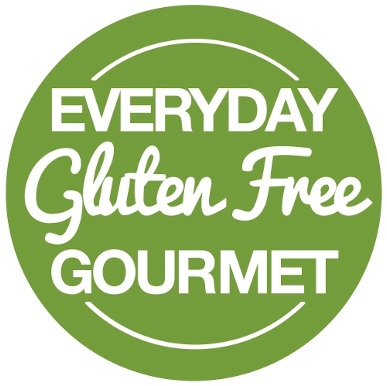

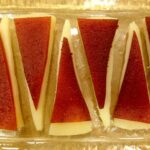

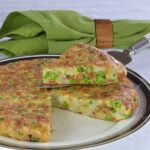


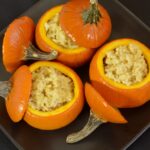

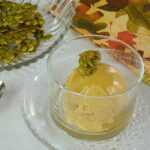
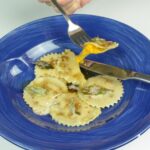



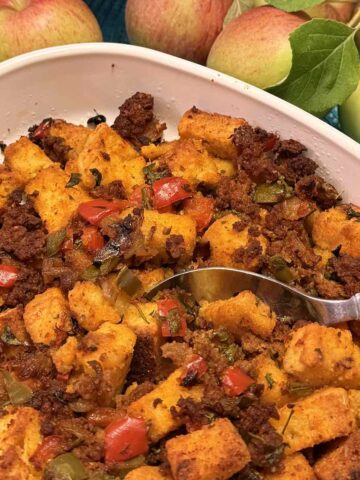
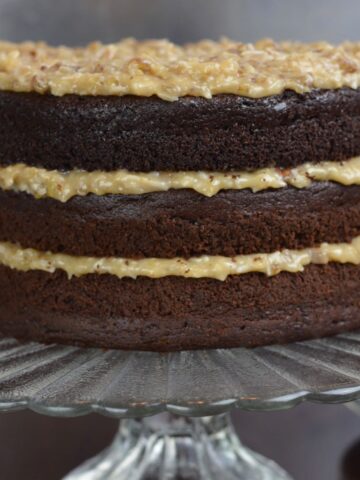
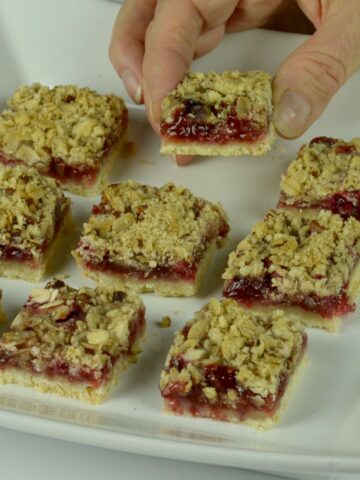
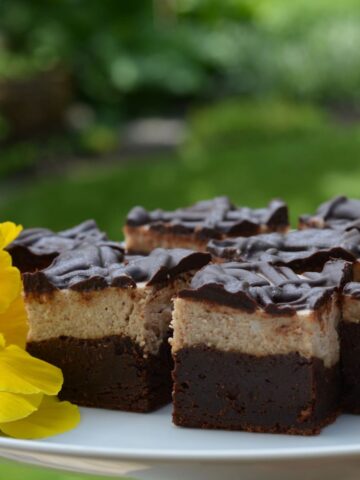
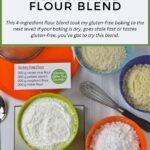
Vee
I can't have millet flour so can I sub with Brown Rice Flour. Loved your article on starches as there is always challenges with Gluten free baking. I love seeing what every one is doing, especially with the constant changes being introduced by Bakers that have contributes to the Gluten free world. I've been gluten free for nearly 20 yrs and about 3 yrs ago started running introduction classes for older people - my generation - on how to build a gluten free flour blend to make bread/rolls. Basically introducing what they need to put together and how, then steer people to the sites that can help them expand with their baking such as yours if they are interested in expanding their culinary interest. So thanks for all the hard work you do for people like me. Very much appreciated.
Cinde Little
That's great to hear Vee, thanks for letting me know. Depending on how much baking you do I suggest you try brown rice flour, oat flour or buckwheat flour in place of the millet flour. If you make small batches of the flour blend you can compare your results and really find something that tastes great. Don't settle for pretty good.
Kim
I am allergic to many things and I am still figuring out what they are. can I substitute Arrowroot powder for the potato starch or for part of the starch. and will this flour work as is without any gums?
Cinde Little
Hi Kim! Sounds like you've got your work cut out for you. Yes, you can substitute arrowroot starch for potato starch. For gluten free baking you typically get a better result when you use 2 starches in smaller amounts, rather than one alone. As for binders you can bake without them your baked goods are more delicate. Some tips are to make cupcakes instead of a whole cake, store your items in containers instead of ziplock bags and just handle them with care. In my post for Banana Muffins I write about how I experiment with different flours. There are some tips there that will be helpful for you as you figure out what you can and can't tolerate.
Mary Bean
I don't know how to measure grams.
Cinde Little
Hi Mary! Although grams are more accurate I never thought to include cup measurements for anyone who doesn't have a digital kitchen scale. I have just added the cup measurements into the notes section for this recipe. You can convert grams to cups or cups to grams using my GF Flour Conversion Chart (type that into the SERACH bar to see it). Here's what I came up with.
Sorghum flour: 1 1/2 cups + 2 tablespoons (196 g)
Millet flour: 1 1/3 cups + 1 tablespoon (202 g)
Sweet rice flour: 2 1/2 cups (305 g)
Potato Starch: 1 3/4 cups + 1 Tbsp (298 g)
These measurements are close enough but do use proper measuring cups and spoons and level them off with a straight edge every time. Best of luck with your baking!
Linda
I mixed up a batch of your EGFG Gluten Free Flour Blend and made the Blondies out of Americas Test Kitchen ‘How Can it be Gluten Free Cookbook Collection’. The blondies turned out very well. (So well I had to cut them in small pieces and put them in the basement freezer…I have little self control for yummy baked goods.)
I will try more of your recipes and more from the ATK cookbook with your flour mix. Thanks again Cinde!
Cinde Little
Another win Linda, that's great! Now that the EGFG flour blend is working for you I'd say you're well on your way to making a lot of fabulous gluten free food. Have fun in the kitchen.
AP
Any suggestions for a substitution for the potato starch? Arroeroot? Tapioca? Both? And in what ratio? (in addition to having CD I am allergic to corn and potato). Thanks!
Cinde Little
Hi AP, you are not alone and you're on the right track. I recommend you trying the recipe with tapioca starch instead of the potato starch. Make some simple recipes like pancakes, muffins or quick breads and see what you think. America's Test Kitchen taught me that a combination of starches in gluten free recipes give better results than using a single starch alone. Having said that sweet rice flour is very close to a starch so you may find this works well. Based on what you learn from the first batch I suggest you try replacing the potato starch with half tapioca and half arrowroot starch. That way you can compare similar recipes paying attention to the texture and taste of your baking. I have never tried arrowroot starch as I was using the other three starches (potato, corn and tapioca), so just quit experimenting in that area. There are still other tweaks, like using baking powder and soda, to fine tune your baking so focus on the overall taste of how the flour combination works in your recipes. Then you can experiment in other ways. Best of luck and happy baking!
Harold Andrew Olson
Looks like I can do this. I will follow you
and try your recipes. I got tired of making
my own flour blends and having them fail
only to get frustrated and throw everything
out. I went buying everything I wanted from
local gluten free bakeries. Can’t afford to not
try and make my own breads and deserts.
Cinde Little
Hi Harold! I've learned that it's important to find a flour blend you like (doesn't taste gluten free) AND that works for the kind of baking you do. In this post you can see a list of many recipes I use this EGFG flour blend in; sticky date pudding, flaky pie pastry, crisp tart pastry, mug cakes, cinnamon rolls and more. I think you can make many bakery quality desserts but I wouldn't attempt puff pastry or phyllo pastry with an everyday blend. Like you I got frustrated and tired of failed attempts. What I decided is to not try a blend for yeast breads (including my pizza dough and crusty bread recipes), or a light, airy Angel Food Cake and my homemade pasta. I've found these recipes work better by weighing a combination of individual flours/starches. I have now set up my pantry to mix those flours up fairly easily. I'm always interested to hear what you learn so come back and let me know. Happy baking!
Laila
My husband is allergic to rice, oats, wheat, tapioca and chickpeas. It's really hard finding Gluten free recipes that don't have these in them. I've just started using Sorghum and millet and he seems to be fine with these. Do you have or know where I can find baking recipes that don't use the ingredients he's allergic to. I need all the help I can get, please
Cinde Little
Hi Laila! I agree, rice-free gluten-free flour blends are not too common. 1) Look at these 2 posts and print them (or examine them) even though they include rice flour. Look for the different combinations people are using and think of what you might try. https://everydayglutenfreegourmet.ca/2020/06/26/downloadable-gluten-free-flour-guide/ and https://everydayglutenfreegourmet.ca/2020/05/29/11-gluten-free-flour-recipes/ 2) Look further down the comments on this page and read the one from Lacy. She too was looking for a rice-free blend and I sent her to a website I found. 3) Focus on a few simple recipes like a muffin, pancakes or brownies so that each time you make them you're just changing the flour blend, nothing else. If you're brave make two recipes at a time to speed up your learning. Not a double recipe, just making them side by side or one after another. Keep good notes! 4) Check out allergicliving.com and fredible.com to find people cooking rice free. 5) Once you get a blend you like you can probably come back to my site and make lots of the muffins, quick breads, pancakes, waffles, brownies and more using your custom blend. You've got your work cut out for you. Good luck!
Janine wilson
Hello Cinde, I have watch you video on mixing GF flour (plain) Which was great , my question is do you use the same mix for SR flour and what do you add to make it SR flour
Cinde Little
Hi Janine, you had me thinking what SR flour was. I'm sure you want to make self rising flour so just add 1 1/2 tsp of baking powder to any flour blend you're using. Some recipes for self-rising flour also include salt but you can adjust that according to the recipe you're making. As I always say there is no GF flour that will work for every single recipe. The reason I call this my blend is because it works for the majority of the kind of baking I do and to my taste buds the results are the same as baking with wheat flour. I use this blend in pancakes, waffles, crepes, muffins, quick breads, brownies, biscuits, cinnamon rolls, pastry, Yorkshire pudding, pasta and some cookies. For a light fluffy Angel Food Cake, sugar cookies and shortbread cookies I use separate flours but I don't make these items as often. I hope that helps and happy baking with your self-rising flour.
PATRICIA
Thankyou for sharing your advice. Could you please recommend a substitute for potato starch? I am also allergic to corn, oats & wheat.
Tapioca starch is fine but maybe it needs another starch blended with it
Cinde Little
Hi Patricia. Yes, you could make this blend substituting tapioca starch instead for the potato starch. Another idea would be to increase the sweet rice flour (almost like a starch) to 400g and decrease the tapioca starch to 200g. My recommendation is to always have a few recipes that you like and make them over and over. For me it is my banana muffin recipe. That way you'll be able to notice the slight difference when you make a change like this and decide what you like best. Be sure to look at my "downloadable gluten free flour guide" for suggested percentages of the different flours. https://everydayglutenfreegourmet.ca/2020/06/26/downloadable-gluten-free-flour-guide/ And if you haven't seen the table in the post "11 Gluten Free Flour Recipes" have a look there for some more ideas. https://everydayglutenfreegourmet.ca/2020/05/29/11-gluten-free-flour-recipes/ Best of luck baking!
Renee
Thank you for this awesome resource. I've found that sorghum flour upsets my stomach, which is a bummer since it is featured in most gluten-free flour blends. What is a good replacement for sorghum? I'm not gf, but I'm trying to incorporate different flours in my baking.
Cinde Little
Hi Renee! I'm glad this resource was helpful to you. Oat flour is a great substitute for sorghum flour and the best part is, if you can't find it you can easily make it yourself from whole oats. I do this in a food processor. Also, here are 2 more resources under the BLOG that you may find helpful. Type the name into the search field (top right corner of every page) - first is my Downloadable Gluten Free Flour Guide and second is 11 Gluten Free Flour Recipes. They are both helpful when learning how to substitute flours. Happy baking!
Renee
Thank you so much, CInde!
Sarah
I have questions do you have a good recipe of gluten free mix flour recipe with bread recipe ? Will the recipe work with sourdough bread ?
Cinde Little
Hi Sarah, I only have one recipe for a crusty loaf that uses sorghum flour, brown rice flour, potato flour and tapioca starch. If you're interested in making gluten free sourdough bread I suggest you join the Facebook group of the same name. They are baking amazing loaves of bread and I'm sure there are many different flour combinations being used. My flour mix works for quick breads and flat breads but if you're serious about bread I think you need to connect with people in that group. Best of luck!
Lacy
Is it possible to have a gluten free mix that doesn't have rice flour? I just can't find one so I'm thinking it might not be possible.
Cinde Little
Excellent question Lacy. Almost all blends do include rice flour but I searched and I found you one over on Savor The Best! Here's their recipe - 325 grams millet flour / 220 grams tapioca flour / 180 grams arrowroot flour / 120 grams teff flour / 100 grams sorghum flour / 55 grams amaranth flour / 2½ tsp xanthan gum. If it works for you be sure to visit their website and let them know. https://savorthebest.com/ancient-grains-gluten-free-flour-blend/
Kathy Youngblood
Hi Cinde
Can you use this flour mix with yeast?
Cinde Little
Hi Kathy! I haven't experimented with yeast breads so I can't say for sure that this flour mix recipe will work. Sweet rice flour is said to not be ideal yet America's Test Kitchen uses it successfully in many breads using their whole grain flour mix. I know that all of the flours separately are used in many different yeast bread recipes but there is so much more that goes into yeast bread...baking is chemistry. Here are my 2 tips for making GF yeast breads:
1. Psyllium husk powder is crucial to create structure in yeast breads.
2. Gluten free breads should only rise once so control the environment and proof the yeast to get the best rise.
I'd love to hear what you made and how it turned out. Good luck!
Hajar
Hello Cinde, Thank you for the beautiful work. I'd like to know if all millets are the same with mix. I can only have finger millet called raggi in hindi.
can it be used in place of millet?
Thank you 😊 💓
Cinde Little
Hi Hajar and thank you for your kind words. I think the answer is yes, finger millet will work in my recipes calling for millet flour. In North America the millet flour isn't clearly labeled as to what kind of millet is used. What I buy is probably proso millet (Bob's Red Mill brand uses proso) and it is a pale yellow colour. My research tells me that flour made from finger millet (and pearl millet) will be slightly darker, a brown-reddish colour. It may taste nutty/earthy compared to the neutral proso one I think I'm using. So I would go ahead and try the finger millet you have seen. You may be very happy with the results so be sure to go with your own taste buds, not what the research says it tastes like. If you find you do want a more mild flavour then I would still use your millet flour but replace a portion of it with sorghum flour for a more neutral taste. Best of luck and come back and tell me how it works. I'm sure there are others who would like to know.
Eveline McNeil
I would like to try your rhubarb muffins .. recipe states that you used your own. I do not buy mixes .. only a variety of flours and starches so that I could learn tastes.
Unfortunately I am of the old school .. cups not grams and no scale. Does this mean I cannot use your recipes successfully?
Cinde Little
Hi Eveline, thanks for asking. You can definitely use my recipes with store bought flour mixes and I always give measurements in cups. What I try and point out is that whether your mix is homemade or store bought, there is a lot of variety out there. As a gluten free baker it's important to recognize that. Just pay attention and experiment as you go. In Facebook groups you can see that some people love a certain flour mix, and others hate it. There is personal taste involved but as long as your baking turns out you're on the road to delicious baked goods. I hope that helps. Happy Baking!